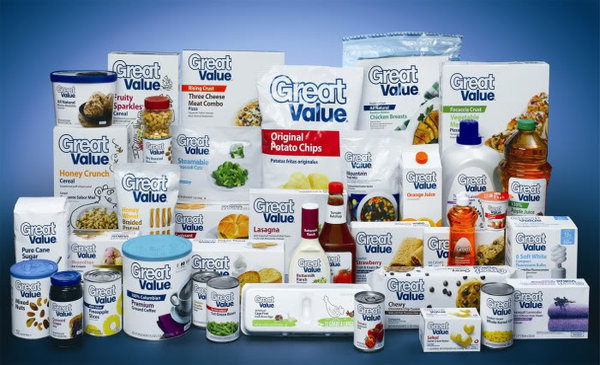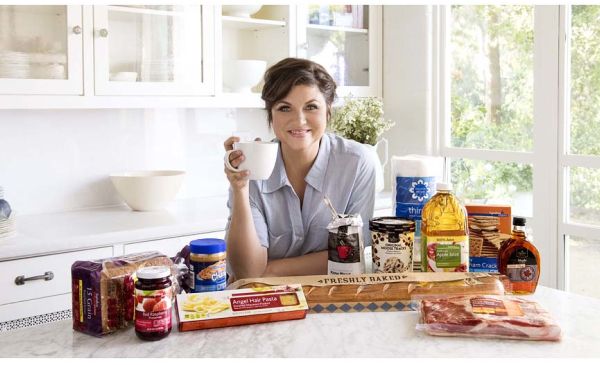
So, do you fancy yourself as an expert on branding? You should have no problem with the following question, then. What’s the biggest fast moving consumer goods (FMCG) brand in America?
The answer isn’t Coke, Gillette or J&J – it’s Great Value, Wal-Mart’s own-label range. Thanks to its presence in every one of Wal-Mart’s 4100 US stores, and the fact that more than 5000 stock-keeping units are sold under the Great Value label, it is the biggest grocery brand in the US by both sales and volume.
And it’s about to get a lot better.
Wal-Mart has announced the conclusion of a year-long project to improve the appeal of its own-label line. The world’s biggest retailer doesn’t do anything on a small scale, and has conducted 2700 consumer tests to guide the overhaul. The result is a range of product introductions, improved formulations and fresh packaging.
It’s a massive strategic operation, but one that was long overdue. Own-label success has never been one of the items on Wal-Mart’s astonishing list of achievements. Currently, only 16% of its sales come from this area. That’s well behind other US food retailers such as Krogers and Safeway, which attribute about a quarter of their sales to own-label products. It’s even punier when contrasted with Tesco, which earns half its sales from own-label, and Aldi, where the figure is 94%.
That’s why Wal-Mart, which typically hires from within, went outside the company and country last year to recruit Jack Sinclair, a Scottish marketer with Safeway and Tesco experience, to oversee the overhaul.
Traditionally, US consumers have exhibited greater manufacturer-brand loyalty than Europeans. Own-label sales in the US have consequently been limited to a national penetration of less than 20%. However, a slew of recent data now suggests that the global credit crunch is eroding US brand relationships in favour of own-label goods. According to market research group GfK, three out of 10 US shoppers are now ‘buying more store-brand products’ than they did a year ago, and 75% cite ‘current economic conditions’ as playing a big role in this decision. Nielsen says sales of own-label goods rose by 10% in 2008, a trend likely to increase this year.
Wal-Mart is also now better placed to offer a strong own-label line thanks to the recent successful revitalization of its corporate brand. After years of exclusively communicating its low prices to consumers, the retailer has changed emphasis onto what those prices enable the US family to achieve. This subtle shift in positioning has enabled Wal-Mart to offer Great Value as more than simply a range of cheap, commodity products – they are equivalent-quality products which represent Wal-Mart’s commitment to helping families.
Aside from brand differentiation, an improved Great Value also carries the more traditional own-label benefits. Despite lower prices, the reduced production costs and zero marketing expense of Great Value mean it will always deliver more profit per unit to Wal-Mart than the equivalent manufacturer brands. And as the penetration and market share of Great Value increase, the space and sales available to manufacturer brands are reduced, and Wal-Mart’s already legendary bargaining position with suppliers is strengthened.
Too many people incorrectly call the past decade the ‘age of private label‘. The one that’s coming will make that seem a very gentle introduction, and Wal-Mart will be in the vanguard of the ‘great value decade’ ahead.
The Blake Project Can Help: Please email us for more about our private label strategy workshops.
Branding Strategy Insider is a service of The Blake Project: A strategic brand consultancy specializing in Brand Research, Brand Strategy, Brand Growth and Brand Education





One comment
Lee Newham
March 28, 2009 at 8:46 am
The old great value line was so horrible and had such poor food values that I’m not surprised the new line isn’t doing even better. Any change would have been for the better. All supermarkets are finding that customers are ‘trading down’ to cheaper products. Wal*mart HAD to do something as they had arguably the weakest own brand offer in the western world in terms of presentation.
I think it’s strange that the own brand offer is called great value. Will this in time become the value line and a better and best positioning above it for when we come out of recession. IF so it may pay off in the long term.
As for the new design, I predict that in a year or two it will look very dated and cheap and they will have to look at the whole thing again. It’s a HUGE improvement over the previous design, but any change would be.
Comments are closed.